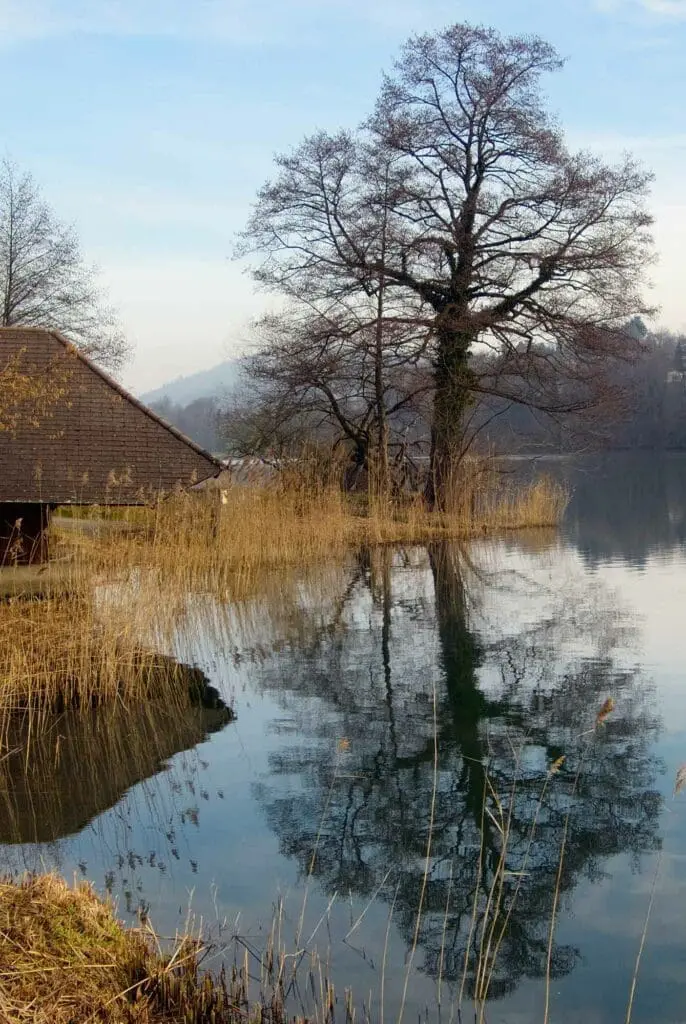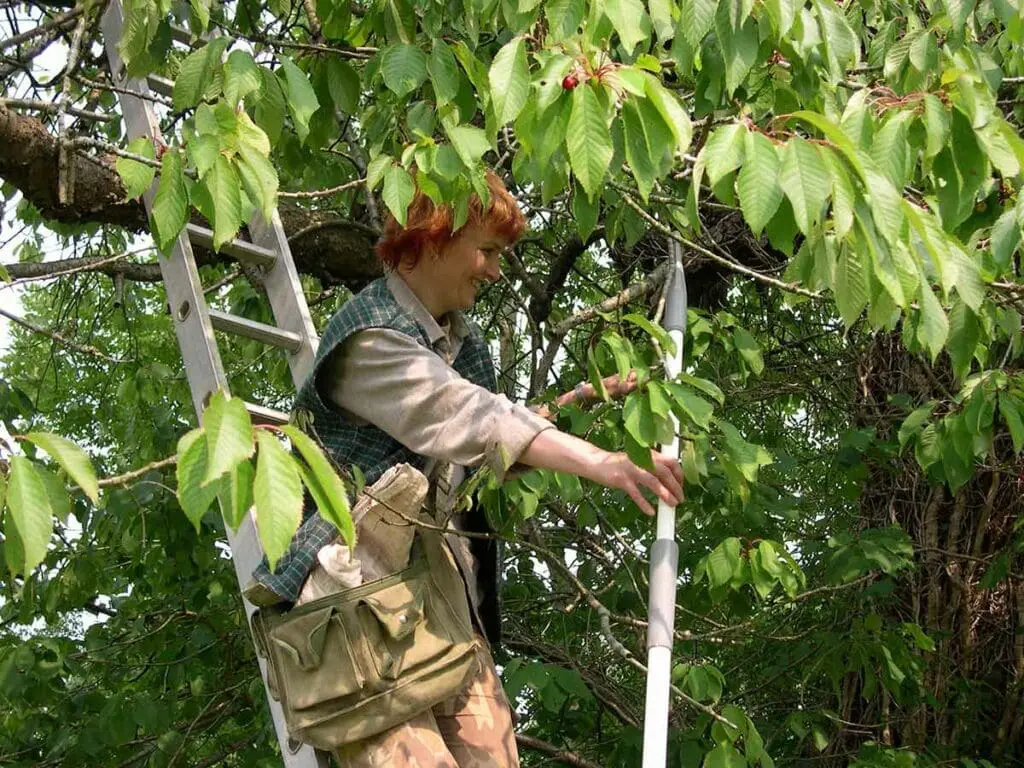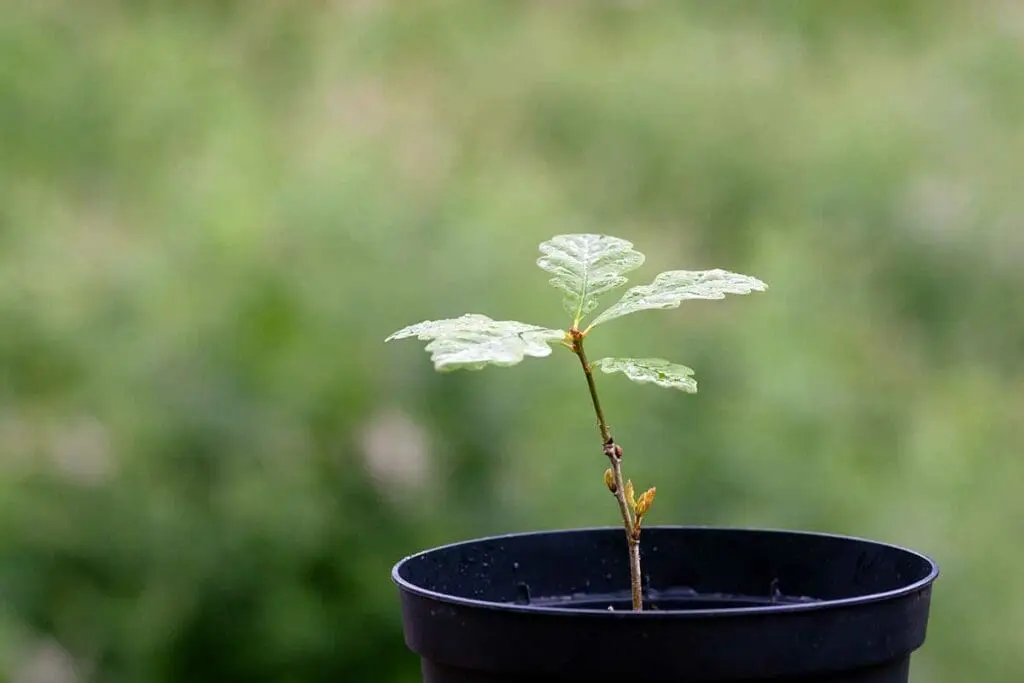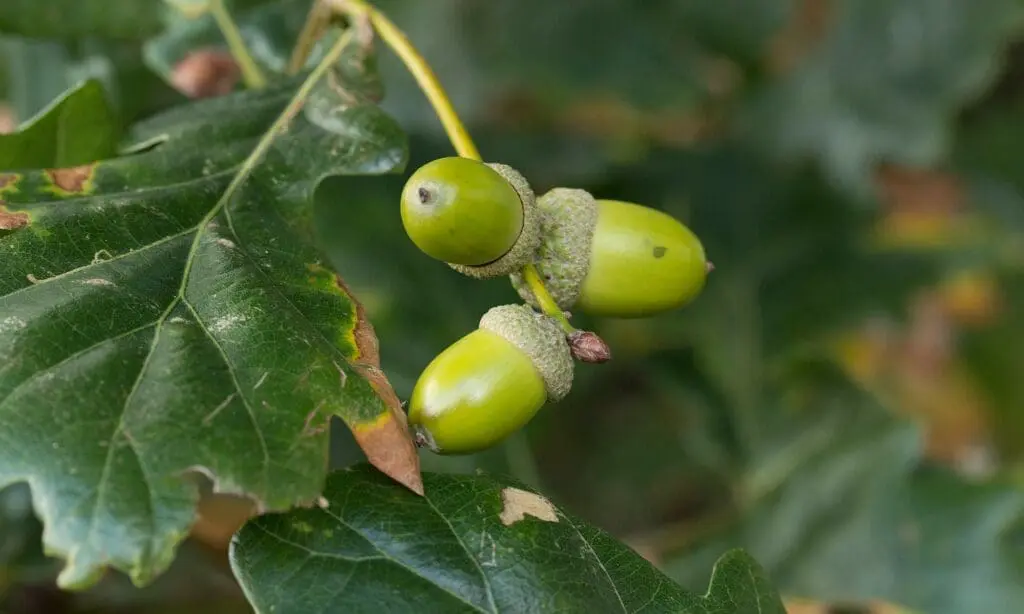- Common name: Alder
- Scientific name: Alnus glutinosa
- Family: Birch (Betulaceae)
- How to grow Alder
Alder grows on wet and clay soil, which is usually poor in minerals. The tree has a special way of obtaining nutrients. It fixes nitrogen (essential for growth) by growing in symbiosis with bacteria that absorb nitrogen from the air. These organisms live in nodules on the roots and the tree benefits greatly from their presence.
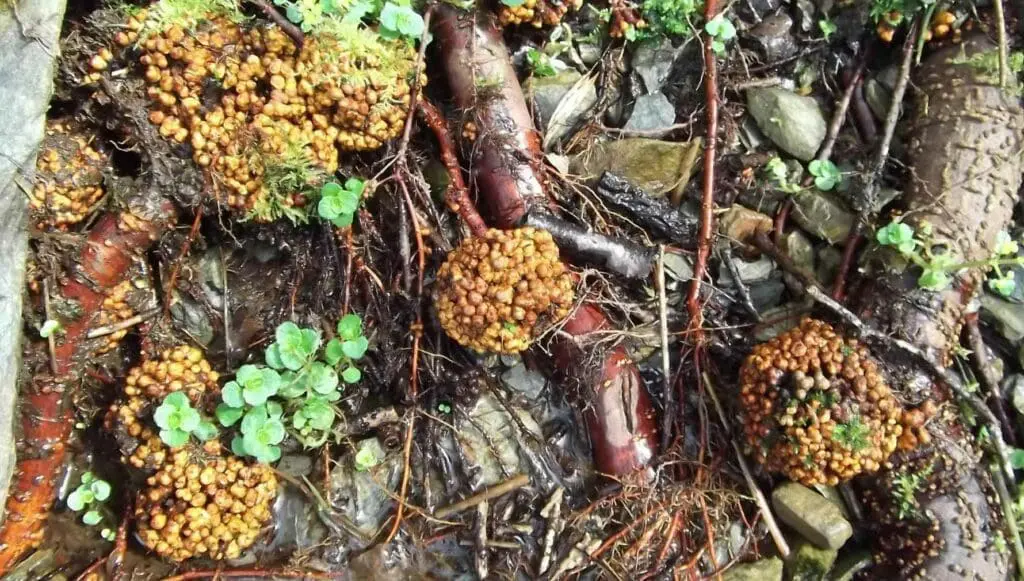
Leaves
The young leaves are sticky to the touch and particularly ‘elastic’. They can vary in colour from almost violet through to red and vibrant green. They are very shiny.
Older leaves are rounded and exhibit a ‘notched’ rather than a pointed tip. In the autumn, the leaves tend to turn brown and dry before falling.
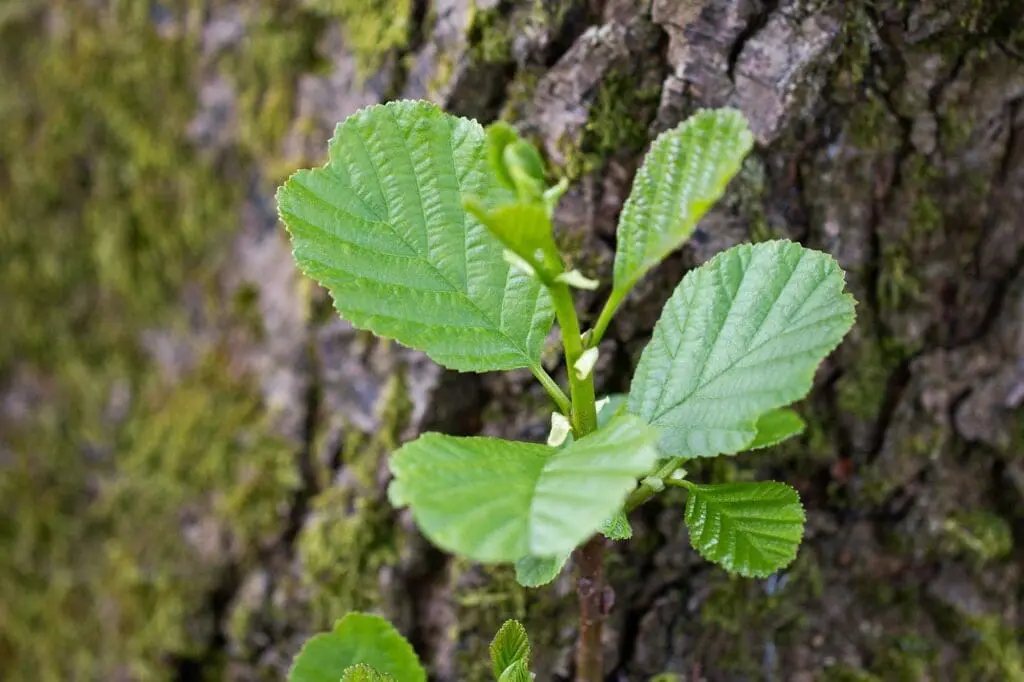
Flowers
The flowers appear before the leaves in early spring. Female and male flowers are borne on the same tree.
The male flower is a long catkin (about 5-10cm) and turns yellow as it sheds its pollen.
The female flower is a very small catkin, purple in colour (above the male in the picture) and will eventually turn into the cone that contains the seeds.
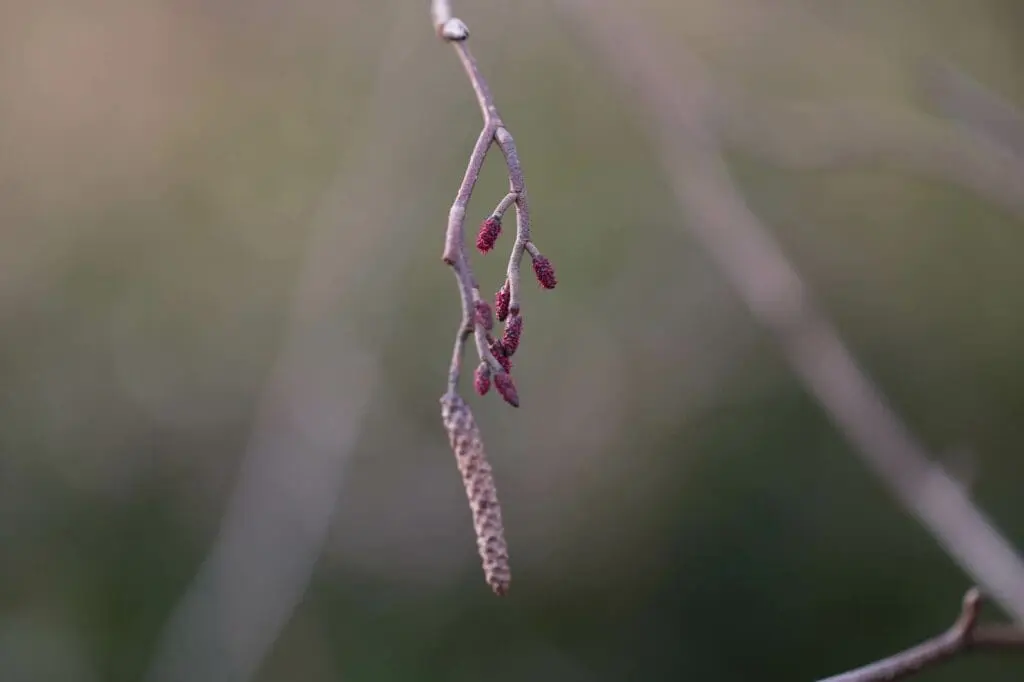
Fruits
The fruits are ripe in October and take the form of small cones. They turn from green to brown as they dry and open to disperse the seed.
The seeds, or nutlets, are flat and waxy and have two corky wings containing air bubbles, which allows them to float and to be carried away by water. The cones often remain on the tree during the wintertime, long after the seeds are gone.
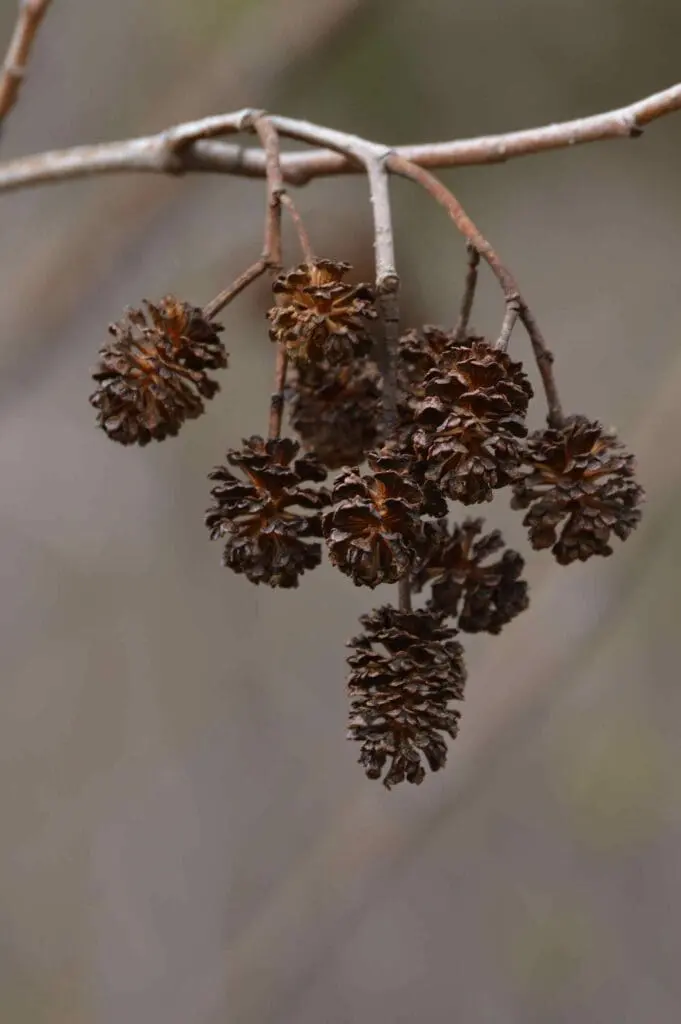
Bark
The bark is greyish and rough. As the tree grows and the trunk expands, fissures or cracks appear in it. Despite this, the timber is very water-resistant. In fact, part of the foundations of Venice is built from this timber.

Habitat
Alder grows along rivers and on wetlands. In fact, it thrives anywhere where the ground is damp.
The roots of the alder often help to stabilise the riverbank and prevent the soil from being washed away. This ensures that riverbanks and lakesides provide many different habitats and, therefore, support a wide diversity of other life. They provide a home for otters and kingfishers, for example.
